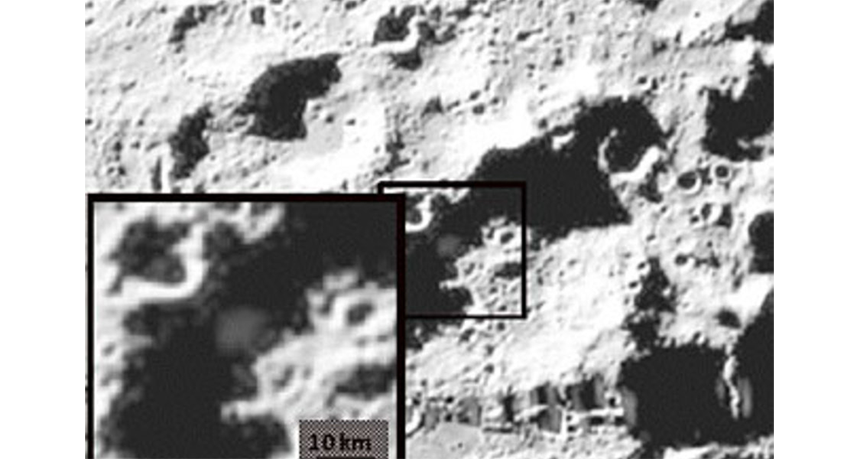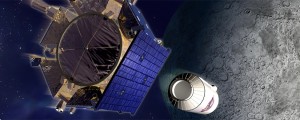Moon crash, splash
NASA scientists smash a rocket into the moon and discover water vapor and ice in a lunar crater

The plume of debris (closeup, lower left) made by a Centaur rocket crashing into a crater at the moon's south pole is seen about 20 seconds after impact in this image taken by LCROSS, the rocket's mother craft. New research reveals that the plume contained vapor and ice.
NASA
There are many ways to study the moon: Look through a telescope, measure its movement across the sky, or watch for mountains (with special sunglasses) as it passes across the sun during an eclipse, for example. But here’s one way that’s a little unusual: crash a rocket into it and see what happens.
That’s exactly what NASA did in October, when scientists steered a rocket and a small spacecraft, called LCROSS, right into a dark crater on the moon’s surface. Just as a rock falling into a pond will cause a splash, the rocket’s crash on the solid moon sent up a cloud of dust and debris (also called a “plume”). This plume was large enough to be seen with telescopes on Earth — but just barely. Scientists had hoped to study the plume to find out whether or not this dark crater held water.

Now, the scientists have finished their first study of the plume — and found water. In a recent press conference, scientist Anthony Colaprete announced that the plume contained at least 25 gallons of water vapor and ice. Colaprete, a scientist at the NASA Ames Research Center in Mountain View, Calif., works on the LCROSS project. (LCROSS stands for Lunar CRater Observation and Sensing Satellite.)
The LCROSS spacecraft flew to the moon on the back of a Centaur rocket. Just as the pair approached the moon, they separated. The Centaur rocket plunged into the moon and sent up a plume, and LCROSS flew through it — just before crashing and, as a result, sending up a second plume. As LCROSS passed through the Centaur’s plume, it used nine different devices — including five cameras — to take measurements of the dust and debris.
But the cameras didn’t deliver evidence of water. Instead, the scientists used an instrument called a spectrometer. A spectrometer is a tool that uses light, or radiation, to identify the chemical makeup of a material. It gets its name from the “spectrum,” which refers to all the different kinds of electromagnetic radiation. An infrared spectrometer measures something we can’t see with our eyes: infrared radiation. (Although infrared radiation isn’t visible, it can be felt. Heat is an example of infrared radiation.)
The infrared spectrometer on board LCROSS took measurements of infrared radiation as the spacecraft passed through the plume. Scientists have long known that molecules like water absorb infrared radiation in particular patterns. So if they see a particular pattern, they know that water molecules are present.
The patterns observed by the infrared spectrometer on LCROSS showed that water molecules had absorbed infrared radiation. Another spectrometer on LCROSS that can detect a different kind of radiation, called ultraviolet radiation, was also important for finding water. That instrument found the pattern of a piece broken off a water molecule – that piece is called hydroxyl.
Both of these measurements together “made us really confident” that there’s water in the lunar crater, Colaprete told Science News.
Finding water on the moon meant LCROSS accomplished its mission, but now scientists have to face a new round of questions. We don’t know, for example, whether or not all lunar craters have as much water in them. Plus, scientists want to know where the water came from. Maybe it came from nearby comets flying by; maybe it came from chemical reactions.
Answering these questions may help scientists learn how the moon formed in the first place. And answering these questions will no doubt lead to more, deeper questions — but that’s the nature of science.







